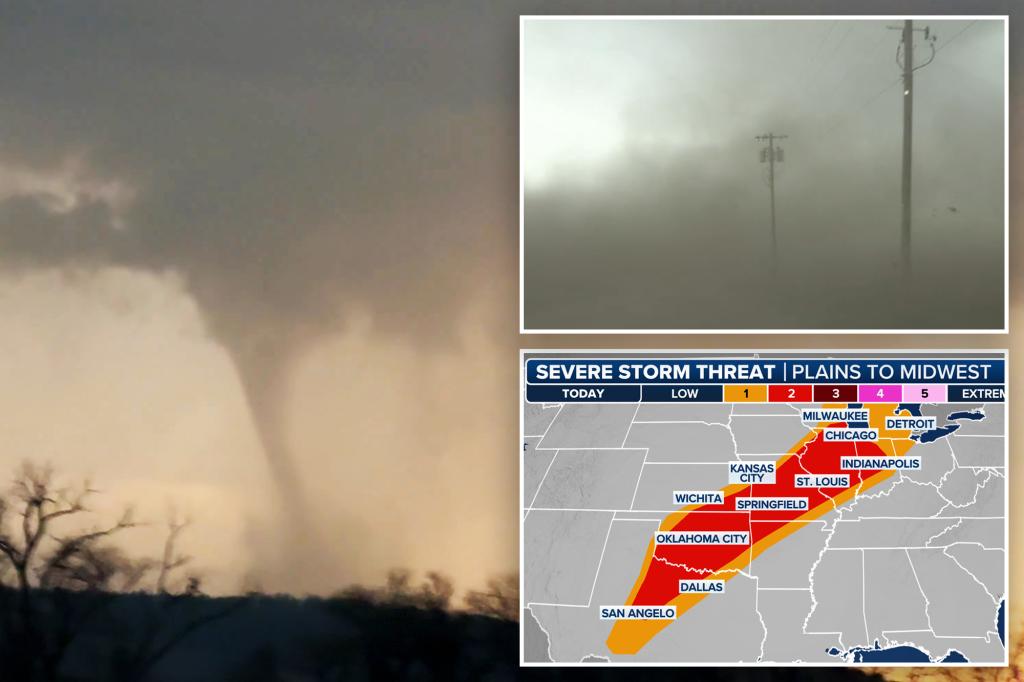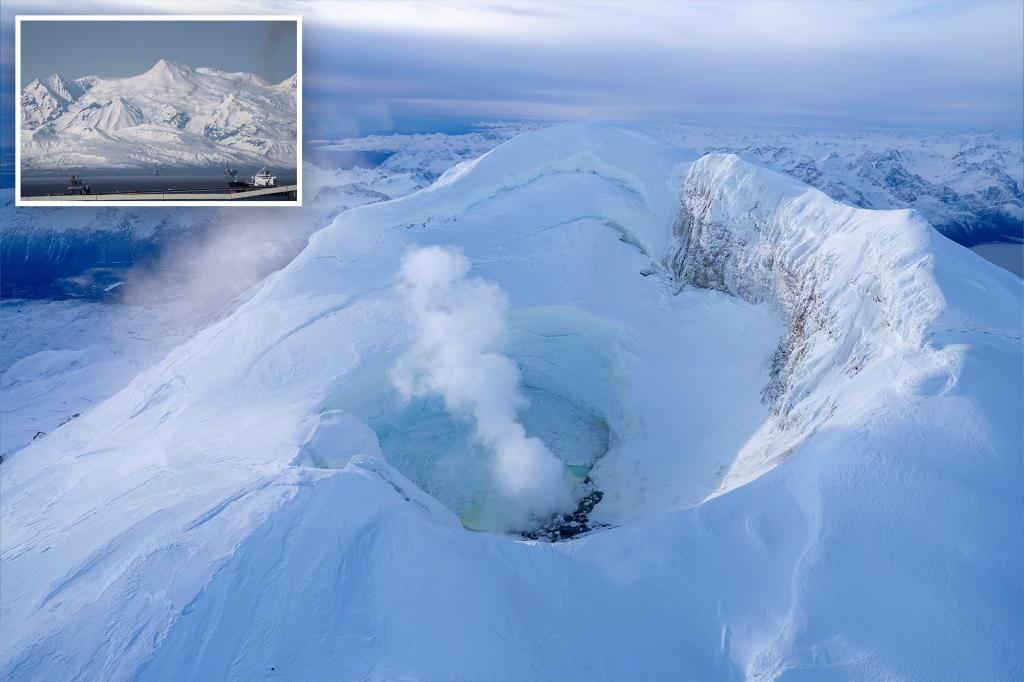The Great Lakes region is bracing for new rounds of severe weather, even as recovery efforts continue following the recent brutal winter storms that left residents and infrastructure struggling to recover. While the community battles with the aftermath of snow, freezing rain, and high winds, weather experts predict more stormy conditions on the horizon, requiring quick action from local authorities, businesses, and individuals to prepare for the next round of adverse conditions. In this article, we will delve into the ongoing recovery efforts, assess the challenges the region faces, and explore the broader implications of the approaching storms.
Winter Storm Aftermath: A Struggle for Recovery
The Great Lakes region, which includes parts of Michigan, Ohio, Wisconsin, and other states, experienced one of its harshest winters in recent years. Accumulations of snow, below-freezing temperatures, and heavy ice caused widespread disruptions. Power outages affected hundreds of thousands, and transportation routes were impassable for days due to snow accumulation and dangerous icy conditions.
Although recovery efforts have been underway for weeks, the full extent of the damage is still being assessed. Residents and local officials continue to focus on clearing roads, restoring power, and providing essential services to those impacted by the storm. Utility companies have been working around the clock to fix downed power lines, while state and local governments have coordinated efforts to clear snow and distribute emergency supplies.
However, the road to recovery is far from complete. In some areas, homes and businesses are still without electricity, while others are struggling with the lingering effects of frozen pipes and water damage. The Federal Emergency Management Agency (FEMA) has been deployed in various counties to provide support, and additional funding has been allocated for disaster relief efforts. Despite these measures, experts warn that the worst may not be over.
Forecasting More Harsh Weather: What to Expect
As recovery efforts continue, weather forecasters are warning that more severe weather could strike the region in the coming weeks. The same weather systems that have wreaked havoc on the Great Lakes are expected to continue pushing cold air, snow, and ice into the area, with forecasts predicting at least two more storms within the next month. The risk of flooding is also a growing concern, as the snowmelt could overwhelm river systems and cause localized flooding.
One of the most concerning aspects of these new storms is the potential for rapid temperature fluctuations. Meteorologists predict significant temperature swings that could create dangerous conditions, particularly for those still recovering from the previous storms. With overnight temperatures dipping below freezing, icy roads and sidewalks pose a serious hazard to pedestrians and drivers alike. This unpredictability complicates recovery efforts, as emergency services may struggle to stay ahead of the fast-changing conditions.
The Impact on Infrastructure
In addition to the physical toll on residents and businesses, the repeated battering from severe weather poses a serious challenge to infrastructure. Roads, bridges, and public transportation systems that have already been weakened by the earlier storms may face further deterioration. Furthermore, the risk of power outages remains high, as aging electrical grids in some areas are particularly vulnerable to winter storms. Some communities may face delays in service restoration due to downed trees, debris, and equipment failures.
Transportation infrastructure, particularly in areas that depend on snowplows and salt trucks to keep roads passable, will continue to be tested. Even with the best efforts of local road crews, some rural and less-traveled areas may remain inaccessible for extended periods. The situation is further complicated by the fact that many workers, from utility crews to emergency responders, are already operating at full capacity. Continued high demands for these services could lead to delays in response times and recovery operations.
Preparations and Mitigation Strategies
As the region prepares for these upcoming storms, state and local governments are ramping up their efforts to mitigate further damage and ensure the safety of residents. Several steps are being taken to prepare for the worst, including:
- Increased Stockpiling of Supplies: Emergency response teams are stockpiling sandbags, water, food, and other necessities in anticipation of potential supply chain disruptions. State and local agencies are also working with local businesses to ensure adequate stockpiles of salt and other de-icing materials.
- Public Awareness Campaigns: Authorities are warning residents to prepare for winter conditions by ensuring that they have emergency kits in their homes and vehicles. Local media outlets, as well as online platforms, are being used to disseminate updates on storm forecasts and any emergency measures in place.
- Coordination with Utility Providers: Governments are coordinating with utility companies to ensure that power restoration efforts are prioritized in the hardest-hit areas. Some regions are exploring long-term investments in renewable energy and grid modernization to reduce reliance on vulnerable infrastructure.
- Improved Snow Removal Equipment: Cities and counties are investing in upgraded snowplows and other snow-removal equipment. This investment is intended to keep main roads clear and accessible as quickly as possible, while also addressing the challenges posed by smaller and rural roads.
Private Sector and Community Efforts
Beyond the efforts of local and state governments, the private sector and community organizations are also playing a crucial role in recovery and preparation. Local businesses have been instrumental in providing shelter, food, and supplies to affected communities. Additionally, organizations like the American Red Cross have been active in helping distribute aid and providing emergency services to those in need.
Community preparedness is a critical element of effective response. Local volunteer organizations, neighborhood associations, and church groups are banding together to ensure that no one is left behind during recovery. For example, some communities are setting up designated warming centers and temporary shelters for those displaced by power outages. Others are organizing volunteer teams to assist elderly or disabled residents with snow removal and other recovery tasks.
Long-Term Implications of the Region’s Vulnerability to Extreme Weather
The ongoing storms and their aftermath are a stark reminder of the Great Lakes region’s vulnerability to extreme weather events. Climate change is contributing to more erratic and intense weather patterns, and experts predict that the region will continue to face significant challenges in the years to come. Rising temperatures and increasing precipitation levels are expected to create more frequent and severe storms, putting even more strain on infrastructure and communities.
One potential long-term solution is the adoption of more sustainable infrastructure and energy systems. For example, communities could invest in better flood control systems, including wetlands restoration and stormwater management systems that are better equipped to handle heavy rainfall and snowmelt. Similarly, integrating renewable energy sources like solar and wind power into the grid could help reduce the vulnerability of the region’s power infrastructure to winter storms.
Moreover, a greater emphasis on resilient urban planning and disaster preparedness could help mitigate the impact of future storms. Building codes that require more energy-efficient and weather-resistant structures, as well as improved emergency response systems, could save lives and reduce economic losses in the face of future extreme weather events.
Conclusion: Preparing for an Uncertain Future
The Great Lakes region is no stranger to severe winter weather, but the intensity and frequency of storms in recent years have underscored the need for better preparedness, both in the short term and over the long haul. While recovery efforts from the latest storms are ongoing, the forecast for more harsh weather requires residents, local governments, and businesses to remain vigilant. By prioritizing infrastructure investments, public awareness, and community support, the region can navigate the immediate challenges posed by these storms and better position itself to face the growing threat of extreme weather in the future.
As the Great Lakes region braces for the new storms, the ongoing efforts to recover and rebuild demonstrate the resilience of its communities. However, it is clear that there is much work to be done to ensure that the region is prepared for whatever comes next. By taking proactive steps now, officials and residents alike can help minimize the impact of future storms and work toward creating a more resilient, weather-ready region.
For more information on emergency preparedness, visit the FEMA website.
See more Your Daily Weather



